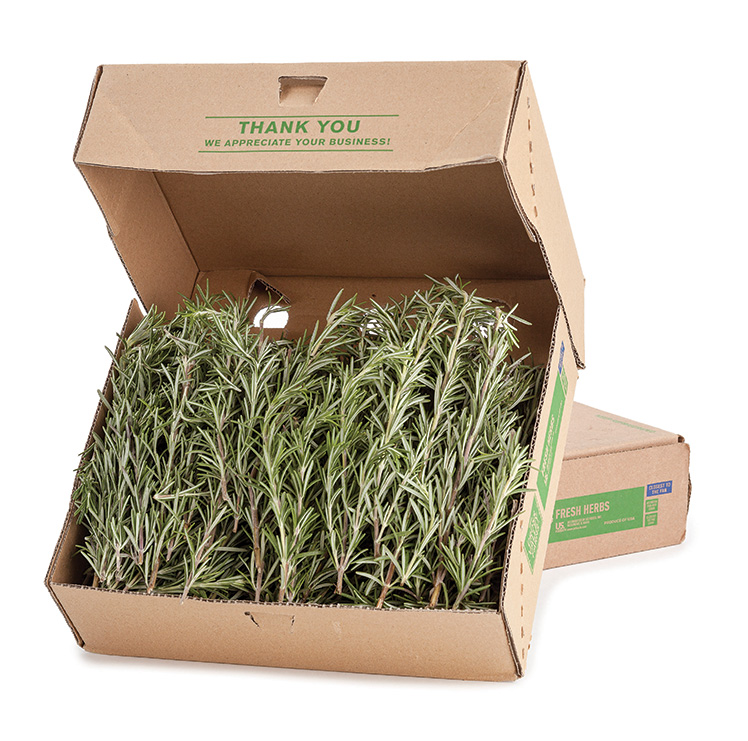Fresh Herbs
Before purchasing, discover everything you need to know about herb varieties, grades, and storage and handling.
Herbs and Spices
The difference between herbs and spices is where they are obtained from on a plant. Herbs are obtained from the leafy and green part of the plant. Spices are obtained from parts of the plant other than the leafy part, such as roots, stems, flowers, fruits, seeds or bark.
In some cases, both an herb and spice may come from the same plant. Dill is an example of this. The seeds from the dill plant are spices, while the stalk of the plant is an herb. While both herbs and spices may be used for the purpose of flavoring food, spices are generally stronger in flavor, so a smaller quantity is needed for flavoring.
Yield: 1 tablespoon chopped fresh herb = 1 teaspoon dried herb
More delicate fresh herbs should be the last thing added when preparing warm or hot dishes to keep flavor, color and fragrance. Sturdier herbs can be added during the last 20 minutes of cooking. Use two teaspoons of a fresh herb per three- or four-serving recipe of meat, vegetables or fish.
Page contents:
Popular Fresh Herb Varieties | Herb Grading | Herb Storage and Handling
Popular Fresh Herb Varieties
| Variety | Primary Applications and Attributes |
|---|---|
| Basil | 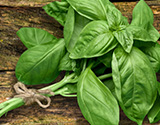 Varieties include cinnamon, Italian, lemon opal, spicy globe and sweet. Slightly crinkled leaves that range from dark green to greenish-purple in color. Aromatic fragrance and sweet pungent flavor. Good for Italian-style dishes, soups, stews poultry and salads. Seasonality: California, Mexico – all year Varieties include cinnamon, Italian, lemon opal, spicy globe and sweet. Slightly crinkled leaves that range from dark green to greenish-purple in color. Aromatic fragrance and sweet pungent flavor. Good for Italian-style dishes, soups, stews poultry and salads. Seasonality: California, Mexico – all year |
| Bay Leaf | 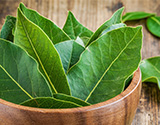 The fresh leaves are very mild and do not develop their full flavor until several weeks after picking and drying. Used to flavor soups, stews, sauces, braise and patés in Mediterranean cuisine. Its flavor mellows with cooking. The fresh leaves are very mild and do not develop their full flavor until several weeks after picking and drying. Used to flavor soups, stews, sauces, braise and patés in Mediterranean cuisine. Its flavor mellows with cooking. |
| Chives | 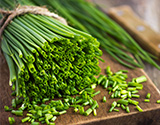 Sturdy, bright green grass-like strands with mild onion flavor. Good for all-purpose use. Sturdy, bright green grass-like strands with mild onion flavor. Good for all-purpose use. |
| Cilantro | 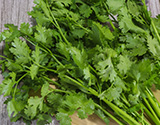 Also called Chinese parsley or coriander. Leaf shape and the color is similar to parsley. Distinctive, pungent flavor. Good for Mexican and Chinese-style dishes. Also called Chinese parsley or coriander. Leaf shape and the color is similar to parsley. Distinctive, pungent flavor. Good for Mexican and Chinese-style dishes. |
| Dill | 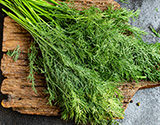 Feathery, bright green leaves with a sweet and savory aroma and flavor. Good for fish, vegetable and egg dishes. Feathery, bright green leaves with a sweet and savory aroma and flavor. Good for fish, vegetable and egg dishes. |
| LemonGrass | 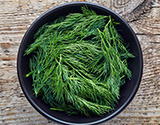 An Asian herb that is long and thin with pale green leaves. Crushing or chopping the stalk releases the sour-lemony flavor. Typically used in soups, for lemongrass chicken and in Vietnamese recipes. An Asian herb that is long and thin with pale green leaves. Crushing or chopping the stalk releases the sour-lemony flavor. Typically used in soups, for lemongrass chicken and in Vietnamese recipes. |
| Mint | 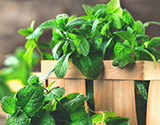 Sweet flavor and fragrant aroma. Good with fresh fruit, desserts or as a garnish for beverages. Mint is also used as a seasoning for lamb and other Middle Eastern-style dishes. Sweet flavor and fragrant aroma. Good with fresh fruit, desserts or as a garnish for beverages. Mint is also used as a seasoning for lamb and other Middle Eastern-style dishes. |
| Oregano | 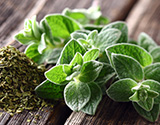 Small, bright green leaves with spicy, pungent flavor. Good for Italian- and Greek-style dishes as well as other meat, poultry and vegetable dishes. Small, bright green leaves with spicy, pungent flavor. Good for Italian- and Greek-style dishes as well as other meat, poultry and vegetable dishes. |
| Parsley | 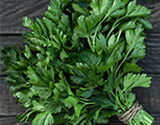 Two common types include curly and flat leaf. Curly parsley has a sweet flavor and crunchy texture and is most often used as a garnish or chopped and used as an all-purpose seasoning. Flat leaf parsley is preferred for cooking. Two common types include curly and flat leaf. Curly parsley has a sweet flavor and crunchy texture and is most often used as a garnish or chopped and used as an all-purpose seasoning. Flat leaf parsley is preferred for cooking. |
| Rosemary | 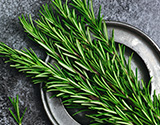 Soft, green short spiky leaves with a fragrant aroma and mild, spicy flavor. Good for meat, poultry and seafood dishes. Soft, green short spiky leaves with a fragrant aroma and mild, spicy flavor. Good for meat, poultry and seafood dishes. |
| Sage | 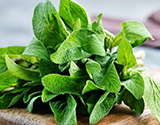 Gray-green, elongated leaves with a strong, musty flavor. Good for stuffings, meat, poultry and egg dishes. Gray-green, elongated leaves with a strong, musty flavor. Good for stuffings, meat, poultry and egg dishes. |
| Tarragon | 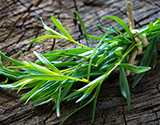 Long, narrow leaves with sweet-savory aroma and flavor. Good in sauces, salad dressings, salads, fish, poultry and vegetable dishes. Long, narrow leaves with sweet-savory aroma and flavor. Good in sauces, salad dressings, salads, fish, poultry and vegetable dishes. |
| Thyme | 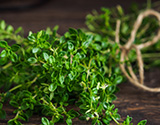 Tiny, round green leaves with spicy, pungent flavor. Good for stuffings, meat, poultry and seafood dishes. Tiny, round green leaves with spicy, pungent flavor. Good for stuffings, meat, poultry and seafood dishes. |
Herb Grading
While there are no official USDA grades for herbs, many growers follow specific guidelines for maintaining overall appearance, leaf shape and color.
Signs of deterioration:
- Basil, oregano and mint: black spotting
- All other herbs: typically, yellowing is an indication
HERB STORAGE AND HANDLING
- Put herbs, except basil and oregano, in the cooler closest to the fan as soon as they arrive (blue zone)
- Basil and oregano should be placed in the cooler, but closer to the door where it is warmer (red zone). Keep fresh herbs away from ethylene-producing fruits and ripening rooms. Fresh herb leaves may bruise, so handle with care. Keep fresh herbs in their original plastic shipping bags, and keep bags in their original shipping carton in your cooler. The closed bags create a stable environment for the herbs
- If herbs arrive heated, open the bags and leave open for 2-3 hours to release excess moisture, then reseal the bags to avoid dehydrating the herbs. Do not mist herbs; packaged herbs retain moisture, so watering them creates condensation in the bag, which will cause premature deterioration
- For best experience, it is recommended to wash fresh herbs and dry thoroughly before preparing or serving
Note: Packaging: Cartons holding 6 or 12 twist-tie bunches of ¼, ½ and 1 lb. film bags
